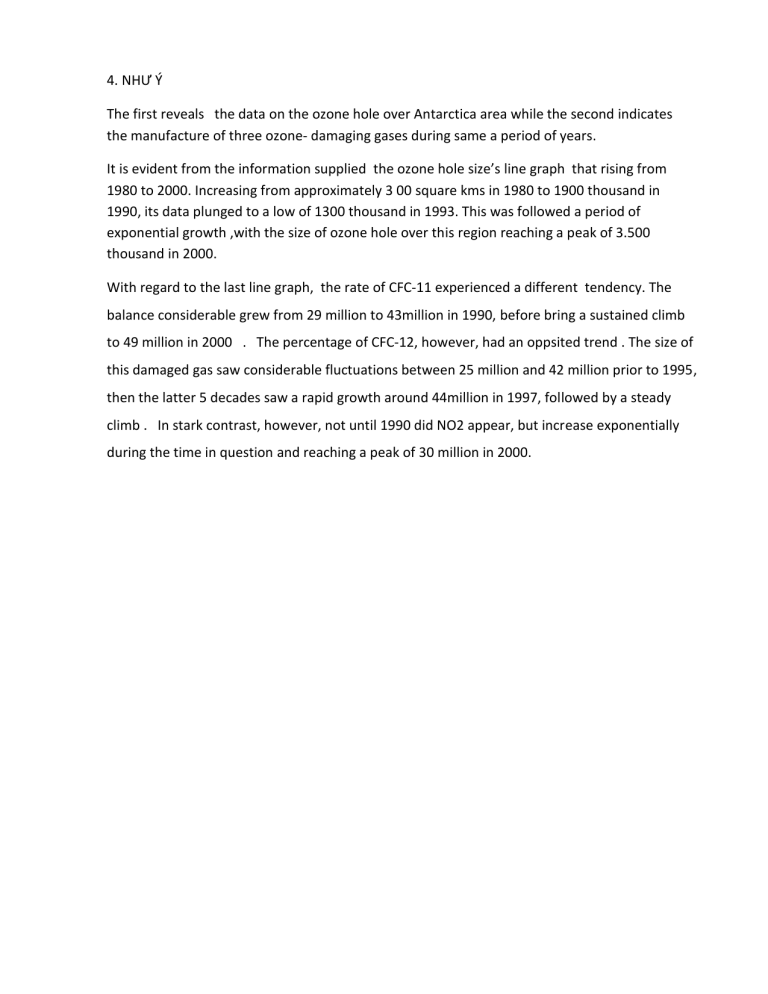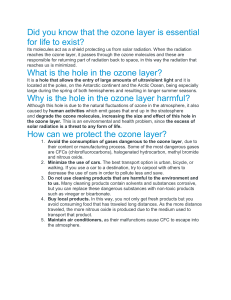
4. NHƯ Ý The first reveals the data on the ozone hole over Antarctica area while the second indicates the manufacture of three ozone- damaging gases during same a period of years. It is evident from the information supplied the ozone hole size’s line graph that rising from 1980 to 2000. Increasing from approximately 3 00 square kms in 1980 to 1900 thousand in 1990, its data plunged to a low of 1300 thousand in 1993. This was followed a period of exponential growth ,with the size of ozone hole over this region reaching a peak of 3.500 thousand in 2000. With regard to the last line graph, the rate of CFC-11 experienced a different tendency. The balance considerable grew from 29 million to 43million in 1990, before bring a sustained climb to 49 million in 2000 . The percentage of CFC-12, however, had an oppsited trend . The size of this damaged gas saw considerable fluctuations between 25 million and 42 million prior to 1995, then the latter 5 decades saw a rapid growth around 44million in 1997, followed by a steady climb . In stark contrast, however, not until 1990 did NO2 appear, but increase exponentially during the time in question and reaching a peak of 30 million in 2000.





